YouTube is a large market and YouTube SEO is the pathway to be a winner in that market.
Being an internet marketer, you need to never ignore its power.
Solely factor you have to know is ranking a video on YouTube.
Right now, On this compact guide, I’m going to share everything and…
…The best part?
You’ll get solely confirmed YouTube web optimization tips to rank number one.
Warning: This is probably the most updated and actionable guide. Read-only if you wish to get millions of views and subscribers to develop your online business.
Not just for YouTube, however, I’m additionally going to share some tips for ranking a YouTube video on the first page of google.
It doesn’t matter what kind of YouTuber are you, it’s for you either you want to promote your product or planning to earn from Adsense income.
Let’s right dive in.
Step 1: Discover a Keyword
Identical to “normal” search engine optimization, step one for ranking video on YouTube is keyword research. I documented my process of researching rankings for highly competitive keywords in 90 days for articles in an experiment I ran last year. The method is actually similar to the way you’d discover keywords in Google.
First, you generate a list of potential keyword ideas. Then, you drill down to a handful of the most effective keywords.
Keyword research tools created for Google (like SEMRush) don’t work for YouTube. To seek out video keywords, you need to use a tool designed for YouTube. Brian recommends two:
First, we have Keywordtool.io. Click on the “YouTube” tab, enter a seed keyword, and it’ll scrape “YouTube Suggest” for lots of possible keywords.

If that doesn’t do the trick, take a look at VidIQ. They have a keyword research tool which is like Google Keyword Planner for videos.

Along with generating an enormous list of keyword ideas, VidIQ also provides you useful metrics (like competition and search volume) that will help you discover the most effective keyword.
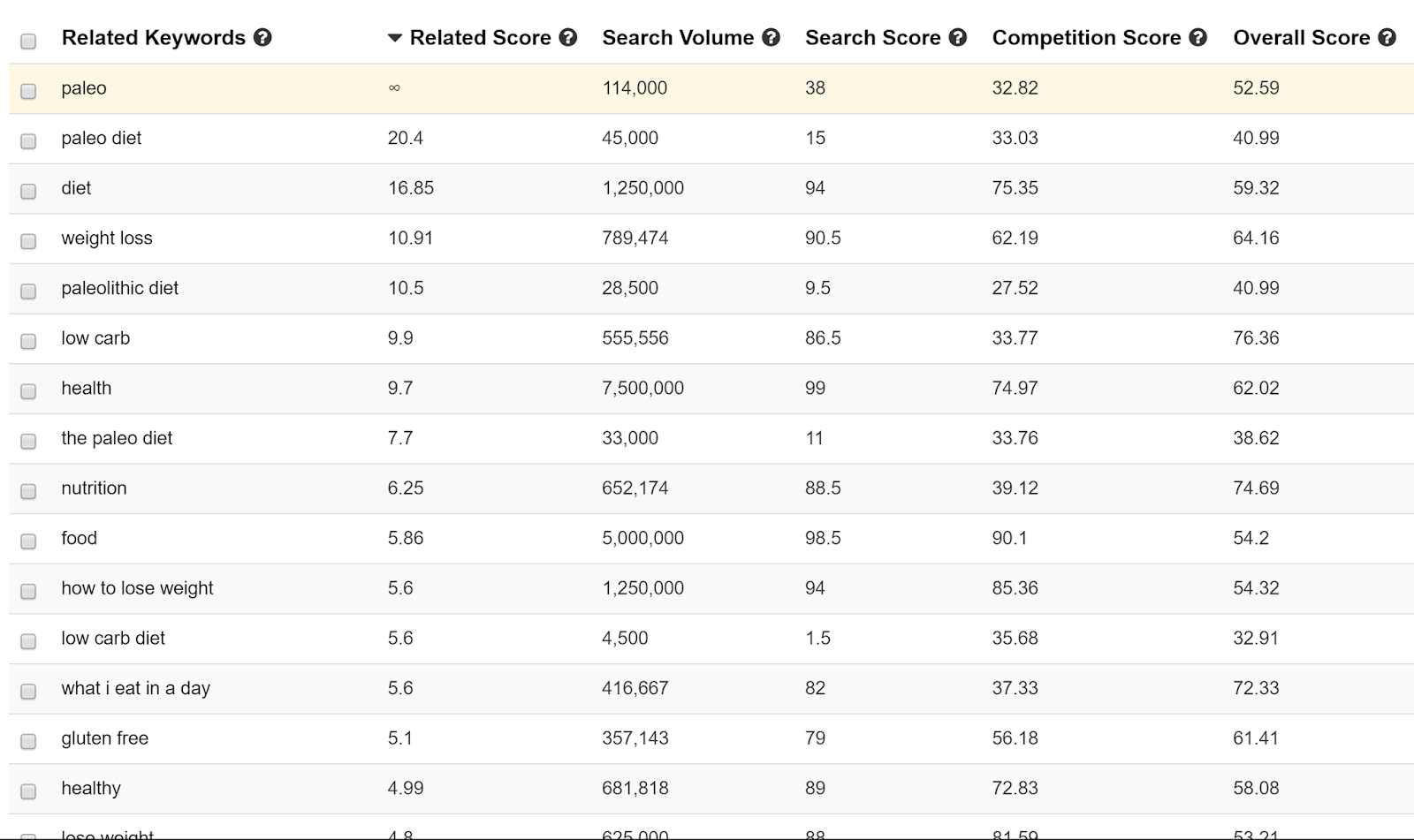
Now, you should prepare a huge list of keywords. However, how do you select the best one for your video topic and title?
Similar to Google SEO, selecting the “best” keyword from a list is more art than science. That mentioned, you should select a keyword that has these factors going for it:
- Search volume: The more searches the better
- Competition: Less is better (duh)
- Market “fit”: Would your target customer seek for this keyword?
For instance, Brian noticed that “e-commerce SEO” got a decent amount of searches and wasn’t tremendous competitive, so he used that as his main keyword.

Step 2: Script Your Video
Now that you’ve got a keyword, it’s time to get into the brass tacks of making your video.
According to Brian, that process should begin by outlining and scripting your video.
People on YouTube have VERY brief attention spans. That’s why many professional YouTubers (even vloggers) script out their videos line-by-line.
A good script ensures you stay on topic throughout the whole video.
It additionally helps eliminate phrases that make YouTube viewers click on away (like “umms”, pauses, and “where was I…”).
Brian tells me he meticulously writes out each script for his videos. Here’s an instance:
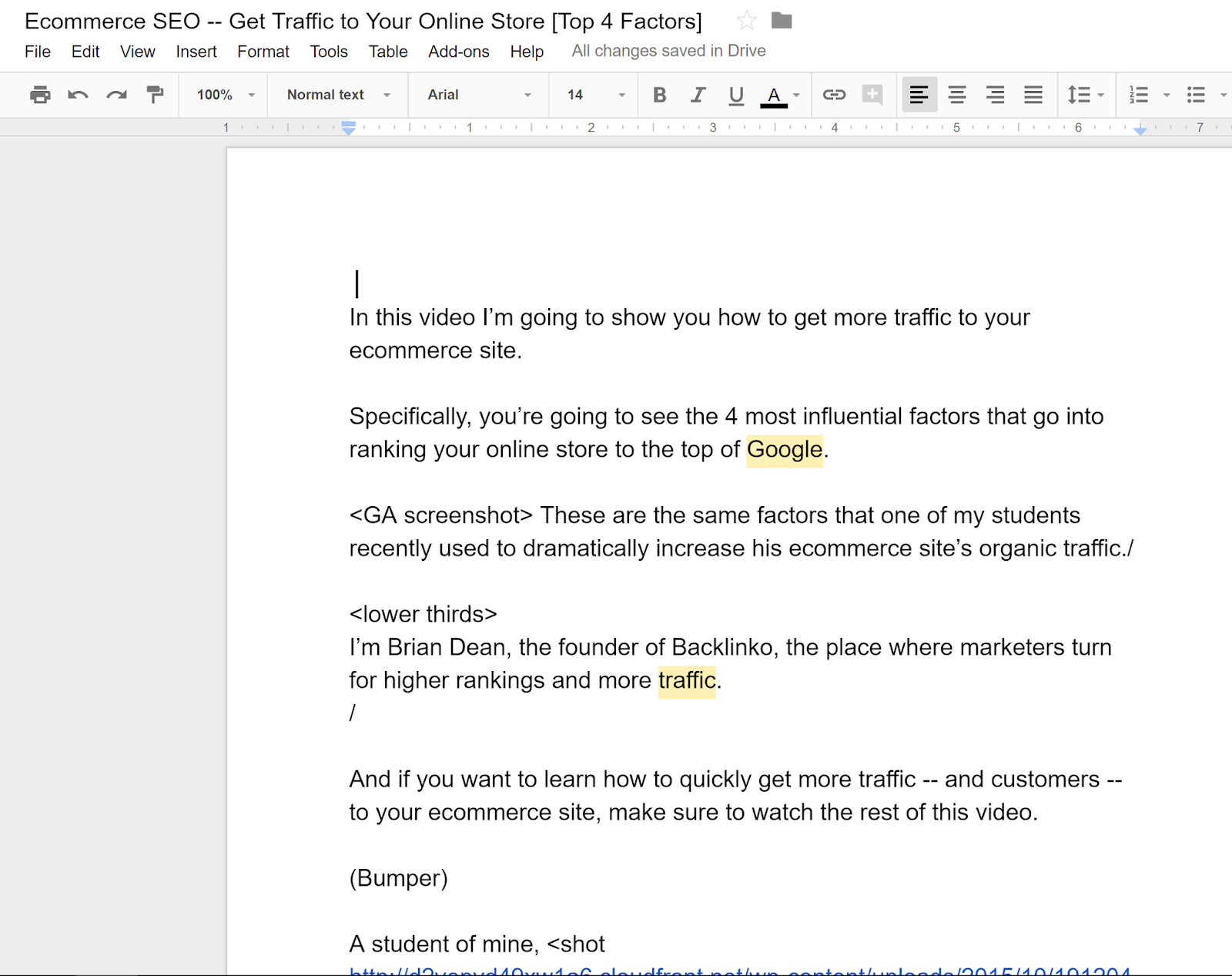
And here’s the basic outline that Brian uses for most of his videos (including his e-commerce search engine optimization video):
- Intro: Preview for what’s coming later in the video. He additionally introduces himself and his brand (Backlinko).
- Steps or List of Ideas: The majority of the content material. For case studies, it is a step-by-step story. But generally (like along with his e-commerce SEO video), Brian will checklist out a handful of ideas or strategies.
- Conclusion/CTA: Brian ends the video with multiple calls to action: one to subscribe to the channel, another to sign up for his e-mail newsletter, and a third to comment on the video they just watched.
Step 3: Produce Your Video
Video production is an enormous subject that might be it’s own publish (or even a whole course).
As an alternative of trying to cover everything, there’s to know about video production here, I’ll link to a few of my favorite resources on the topic.
I worked with the folks at Wistia on varied content and PR projects a few years ago. We’re good friends and I still follow their weblog. Here are a few of my favorite tutorials on the subject from their learning center:
- The Down and Dirty DIY Lighting Kit
- Setting Up a DIY Office Video Studio
- Choosing a Background for Your Video
One of the first things you’ll discover about Brian’s video is that it’s professionally carried out. It is shot with a nice camera and has good lighting with high-quality audio. Of course, this isn’t 100% required (plenty of successful YouTube videos were recorded with cheap cameras and even iPhones).
Here’s what Brian mentioned about the process he used to create his e-commerce SEO video:
Personally, I use a studio to shoot my videos. However, that’s 100% NOT required to do well. In truth, I produced the first batch of videos in my house and they look virtually as good. The main causes I take advantage of a studio area) so I don’t need to worry about production stuff like lighting etc. and b) the sound quality is often better. So when you’re simply getting began, I’d do whatever’s easiest for you.
Step 4: Upload and Optimize Your Video
OK, so you’ve created a superior Youtube video for ranking. Now it’s time to upload and optimize it.
Right here’s how Brian optimized his video around the keyword “e-commerce SEO”.
First, Brian ensure to verbally say the term “e-commerce SEO” in his video. YouTube now automatically transcribes all of its videos (and it’s pretty darn accurate, too). Brian is convinced that YouTube “listens” to your video content material in the same way Google spider indexes the body of a webpage. I haven’t personally seen YouTube confirm this, however, it is sensible.
Subsequently, he included the keyword in his video title. Similar to an online page, YouTube desires to see the keyword in your title.

YouTube isn’t as subtle as Google (it lacks anything near Hummingbird or RankBrain), so you need to use your precise keyword here (no synonyms or variations in case you can help it).
Subsequently, it’s time to write down the video description. Your video description is a story of what your video is about. Brian prefers to write down long, in-depth descriptions so YouTube has lots of content material to work with. For instance, the description of his e-commerce SEO video is 252 words. That is considerably longer than most other video descriptions on YouTube.
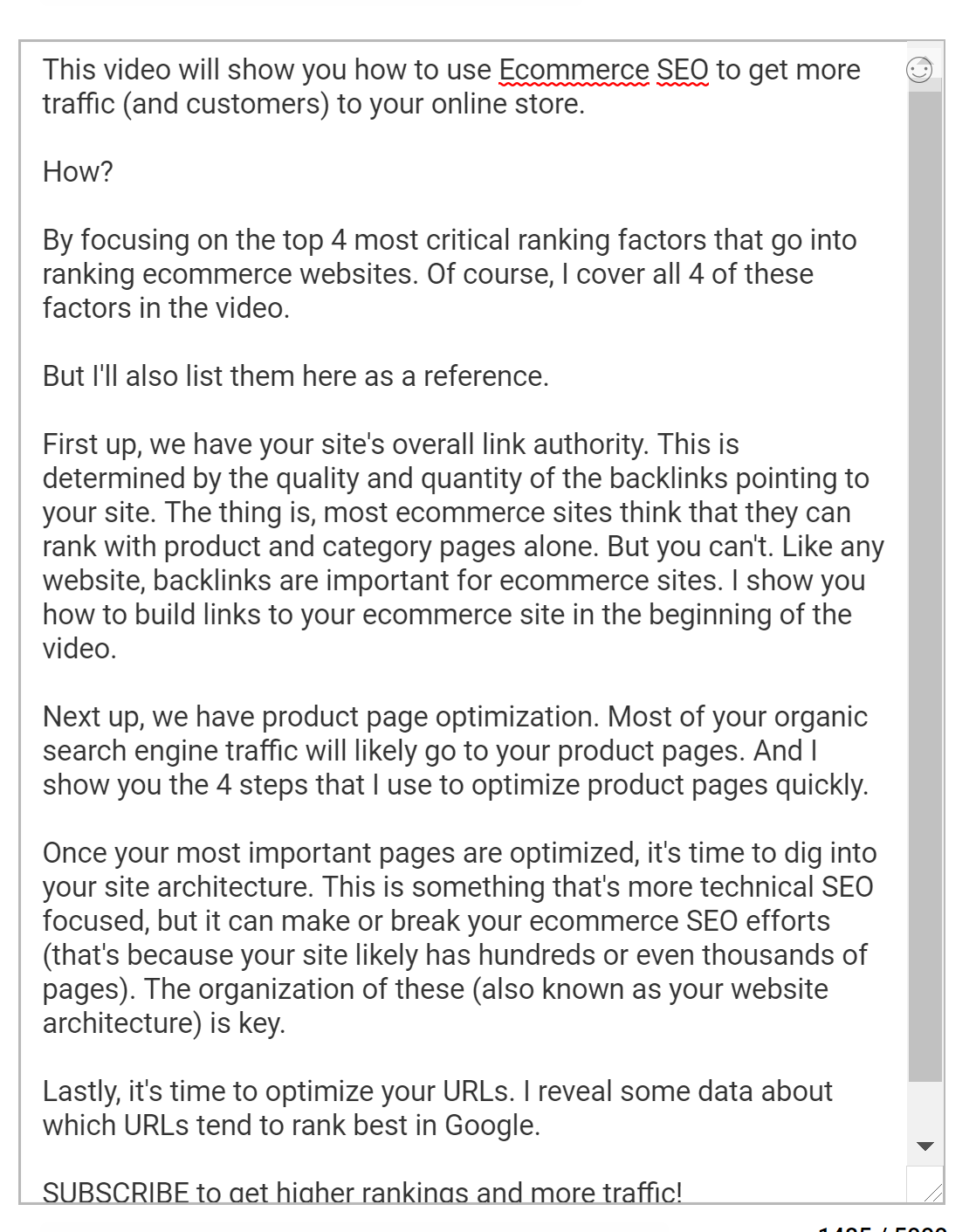
Finally, Brian created tags for his video. As Brian found in his recent YouTube ranking video factors, tags aren’t as important as they once had been. Nevertheless, it’s still worthwhile to tag your videos. Brian recommends a tag combine that appears like this:
- Your exact keyword + variations (“e-commerce SEO”, “e-commerce traffic”)
- A few broad keywords that describe the “large topic” your video falls under (“SEO”)
- A few keywords that describe topics you touch on in the video (“link building” and “on-page SEO”).
From an SEO perspective, that’s actually all you can do to keyword-optimize your video. The remainder is decided by YouTube algorithms primarily based on your video’s overall quality.
Step 5: Promote Your Video
When I first talked with Brian about this step, I naturally gravitated towards a method where you’d essentially do your own PR to get the video included on different blogs and publications. Nonetheless, this technique is more of a long term method that may take weeks or even months before you get the embed or reference to the video on a blog publish.
We needed something more brief term. One of the first lessons Brian realized about YouTube is that it’s extremely competitive:
“When I began on YouTube, I underestimated the competitors. I believed that the sheer quantity of customers meant that competitors weren’t an enormous deal. However, I used to be flawed. YouTube has a ton of viewers, but there’s additionally a ton of video content material to compete with.”
Similar to a weblog or infographic, YouTube videos need a little “push” to get going. And one of the great things about YouTube is that it’s a discovery platform. YouTube actively promotes videos it thinks you will like on their homepage, the “Suggested Video” sidebar, and yes, in YouTube’s search results.
However, YouTube needs to collect a critical mass of data on your video (by measuring likes, views, viewers retention, and feedback) n order to determine if people actually enjoy watching your video.
So Brian discovered that a preliminary promotional “push” offers YouTube the person suggestions it must actively present your video to its personal base.
I asked Brian how he promoted his YouTube e-commerce SEO video. Here is the process he used:
First, he emailed his e-mail subscribers concerning the video. His e-mail was transient with two links directly to his Youtube video.
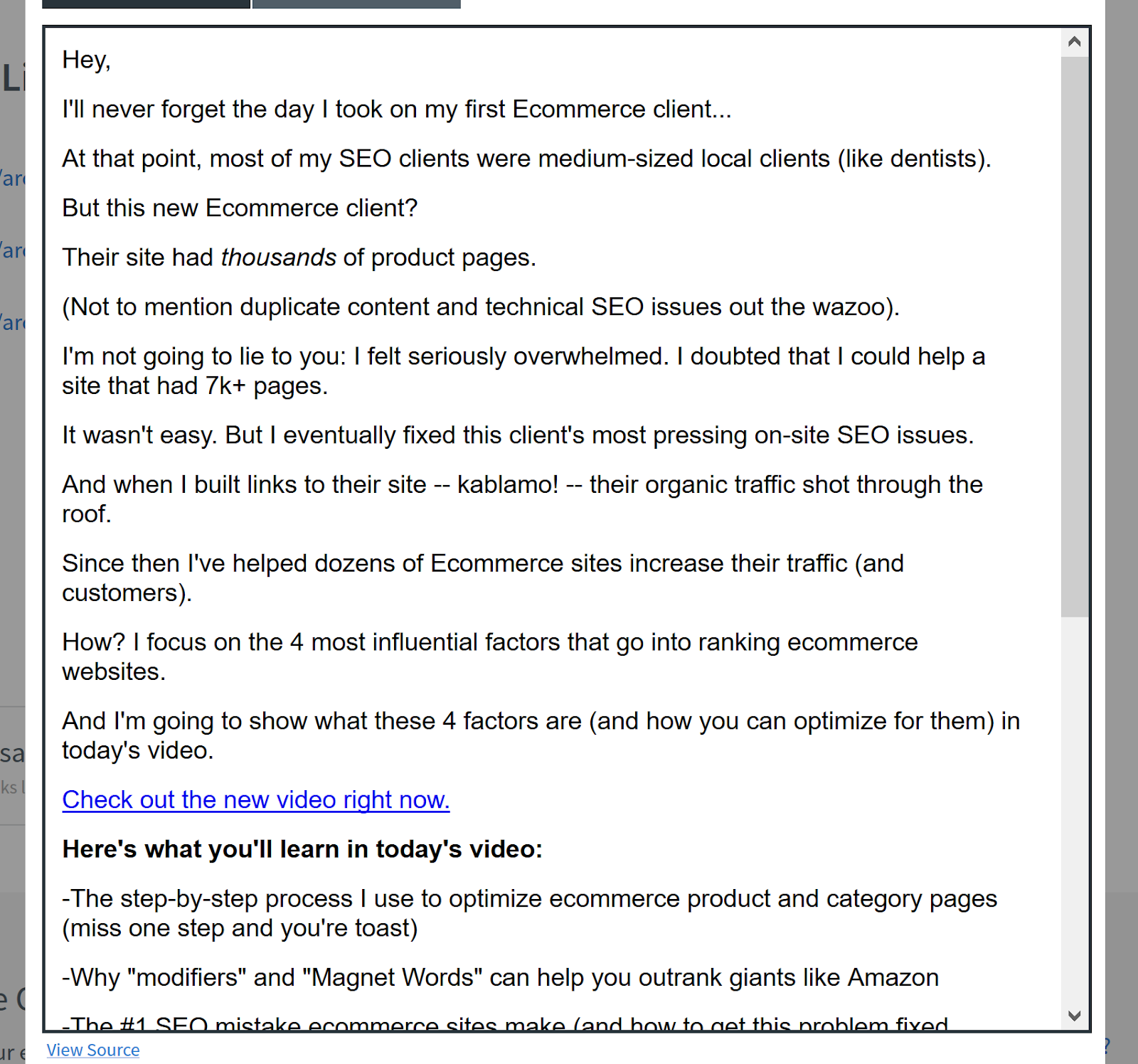
Some people embed the video on their weblog and send people there. Brian says that can also work, but he prefers to direct people to YouTube because then they have the opportunity to like, comment, and subscribe.
Brian additionally shared his video on social media (particularly, Twitter and Facebook).
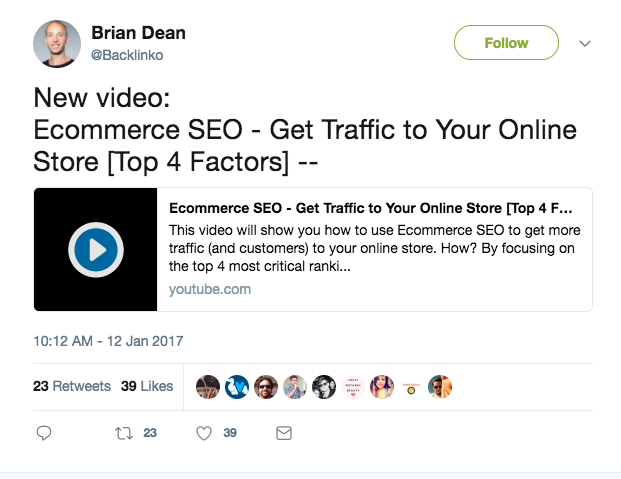
Sharing on these two social networks helped Brian for ranking Video on YouTube.
Brian additionally posted a preview of the video on Facebook to entice people to look at the complete video, as you’ll be able to see below:
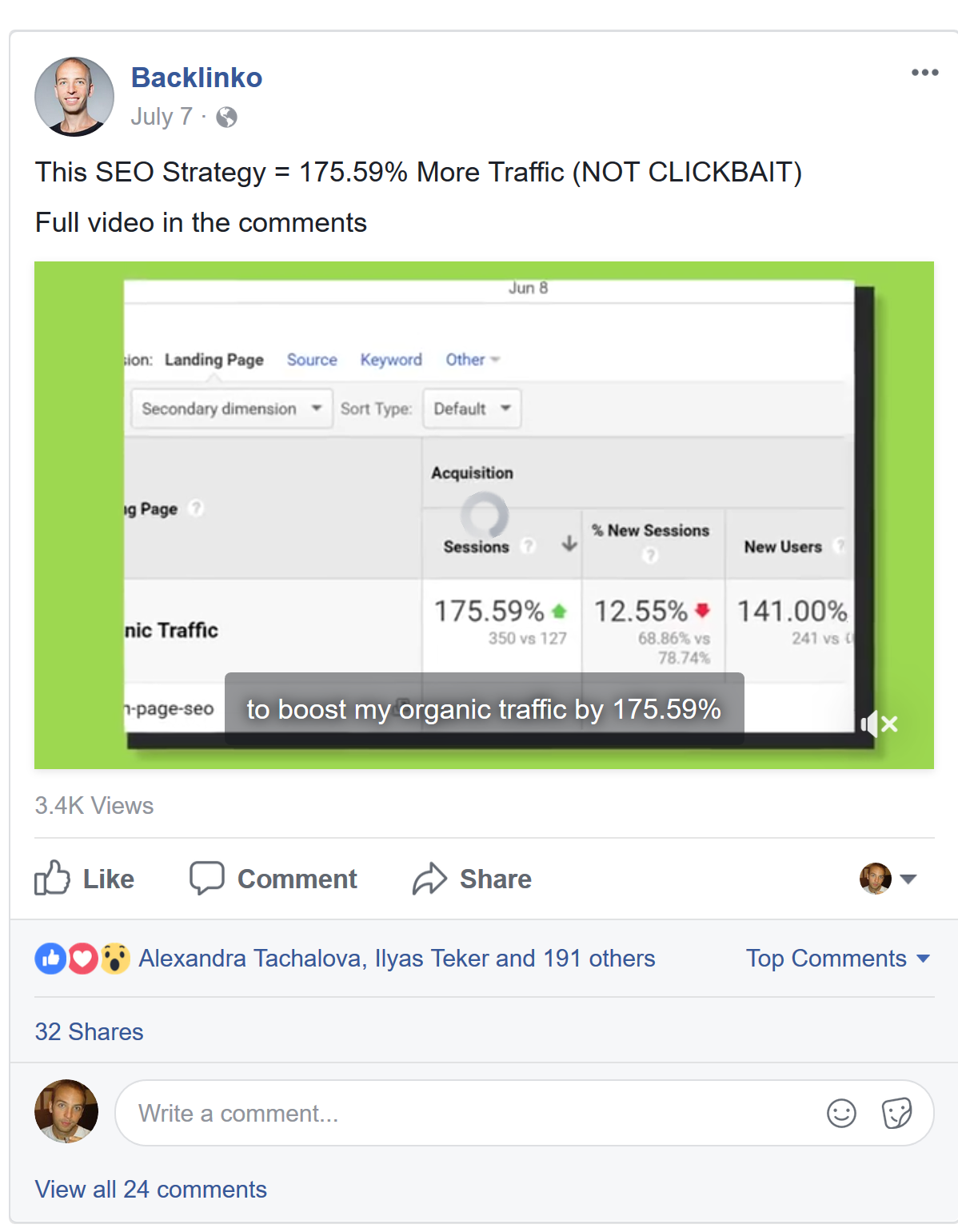
As a basic rule of thumb: if the video is up to snuff, and optimized properly, it simply needs a promotional push to get the ball rolling. YouTube takes care of the rest.
You need to use Facebook, Twitter, and E-mail for that “little push.” Some of you might say “I don’t have such an enormous viewer!” Brian’s reply to that’s:
“You don’t need an enormous viewer. What you’re attempting to do is get some eyeballs in your video to assist Google to get some data about it. You don’t need hundreds of thousands or even tens of thousands to see it, just a few thousand or so to take a look at it.”

